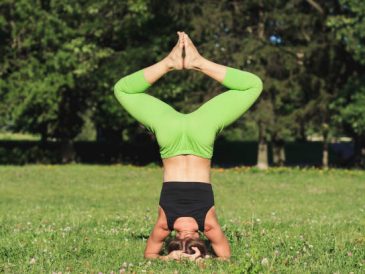Hot yoga has gained immense popularity in recent years, promising a plethora of physical and mental benefits. Proponents of hot yoga claim that practicing yoga in a heated room enhances flexibility detoxifies the body, and promotes relaxation. However, skeptics question whether subjecting the body to such extreme temperatures is truly beneficial or potentially harmful. To unravel the science behind the sweat, we delve into the physiological effects of hot yoga and explore whether it’s a safe and effective practice.
Understanding Hot Yoga: Hot yoga typically involves performing traditional yoga poses in a room heated to temperatures ranging from 90 to 105 degrees Fahrenheit (32 to 40 degrees Celsius) with high humidity. The intense heat is believed to mimic the climate of India, where yoga originated, and purportedly facilitates deeper stretching and increased calorie burn.
Physiological Effects:
- Increased Flexibility: The heat in hot yoga studios is thought to loosen muscles and increase blood flow, thereby enhancing flexibility. Studies have shown that heat can improve tissue extensibility and decrease muscle stiffness, allowing practitioners to achieve more profound stretches.
- Detoxification: Sweating profusely during hot yoga may create a perception of detoxification. However, the body naturally eliminates toxins primarily through the liver, kidneys, and respiratory system rather than through sweat. While sweating can expel some waste products, its role in detoxification is often overstated.
- Cardiovascular Benefits: Exercising in a heated environment can elevate heart rate and metabolic rate, leading to increased calorie expenditure and potential cardiovascular benefits. However, individuals with heart conditions or high blood pressure should exercise caution, as extreme heat can place additional strain on the cardiovascular system.
- Mental Well-being: Hot yoga enthusiasts often report feelings of relaxation and stress relief after a session. The combination of physical exertion, deep breathing, and mindfulness practices inherent in yoga can promote mental clarity and emotional balance.
Potential Risks: While hot yoga offers numerous potential benefits, it also carries inherent risks, particularly for certain individuals:
- Dehydration: Exercising in a heated room can lead to excessive fluid loss through sweating, increasing the risk of dehydration. Proper hydration before, during, and after hot yoga sessions is essential to maintain electrolyte balance and prevent heat-related illnesses.
- Heat Exhaustion and Heat Stroke: Prolonged exposure to high temperatures can overwhelm the body’s cooling mechanisms, leading to heat exhaustion or even heat stroke. Symptoms may include dizziness, nausea, rapid heartbeat, and confusion. Individuals should listen to their bodies and take breaks as needed to avoid overheating.
- Musculoskeletal Injuries: The combination of heat and intense physical activity in hot yoga may predispose practitioners to musculoskeletal injuries, such as strains, sprains, and overuse injuries. Practicing proper alignment and avoiding pushing beyond one’s limits can help mitigate the risk of injury.
- Cardiovascular Strain: Individuals with cardiovascular conditions, such as hypertension or heart disease, may be at increased risk of complications when exposed to extreme heat during hot yoga. It’s essential to consult with a healthcare professional before beginning a hot yoga practice, especially for those with pre-existing medical conditions.
Hot yoga offers a unique blend of physical and mental benefits, including increased flexibility, potential cardiovascular improvements, and stress reduction. However, it’s not without risks, particularly for individuals who may be susceptible to dehydration, heat-related illnesses, or musculoskeletal injuries. As with any form of exercise, moderation and mindfulness are key. Practitioners should listen to their bodies, stay hydrated, and practice within their limits to safely reap the rewards of hot yoga. Consulting with a healthcare provider before starting a hot yoga practice is advisable, especially for those with underlying health concerns. By understanding the science behind sweat, individuals can make informed decisions about incorporating hot yoga into their fitness routine.




